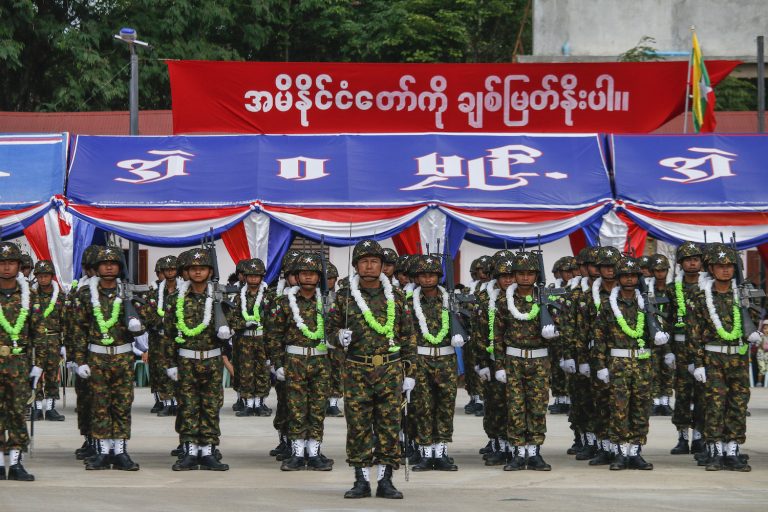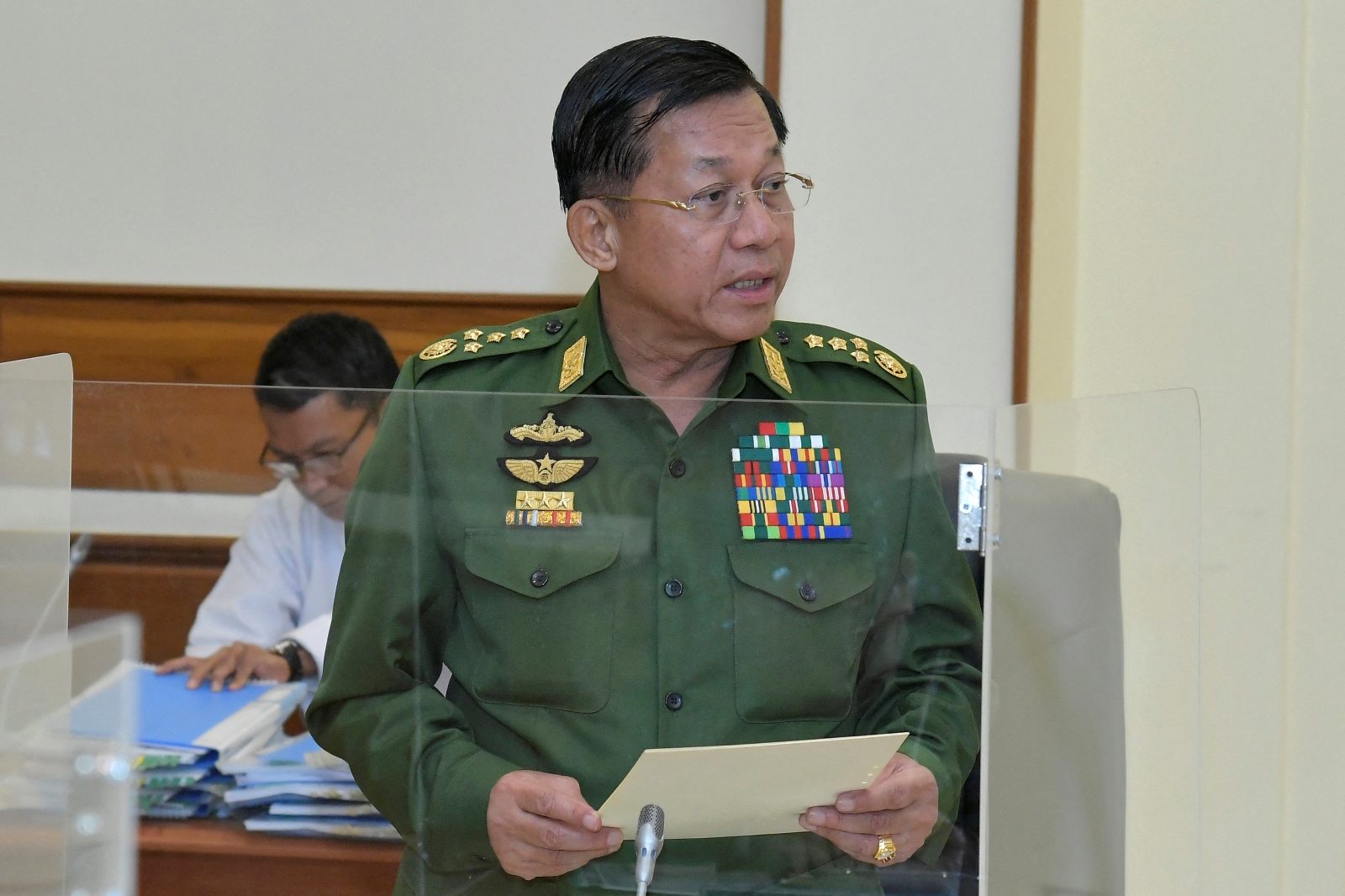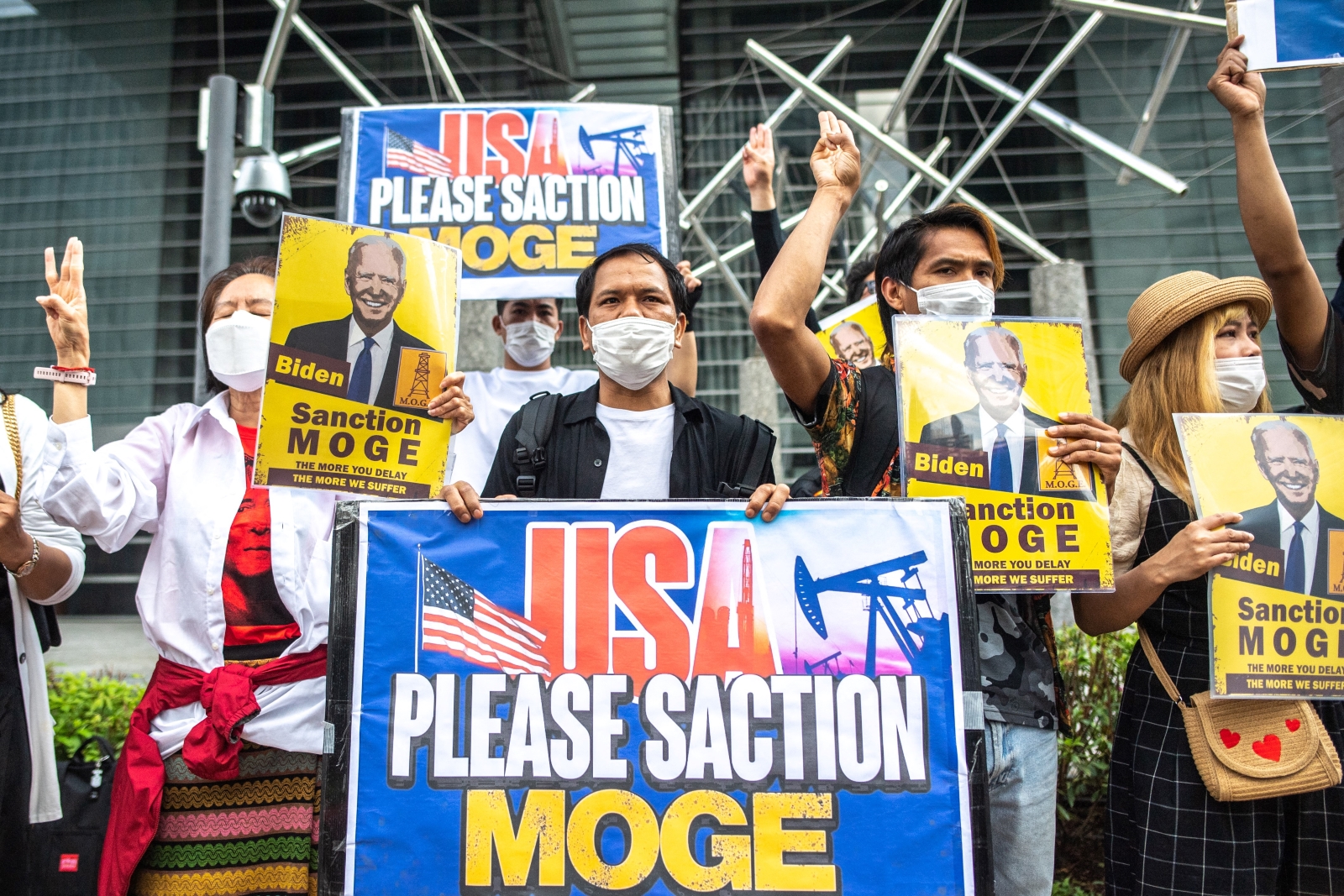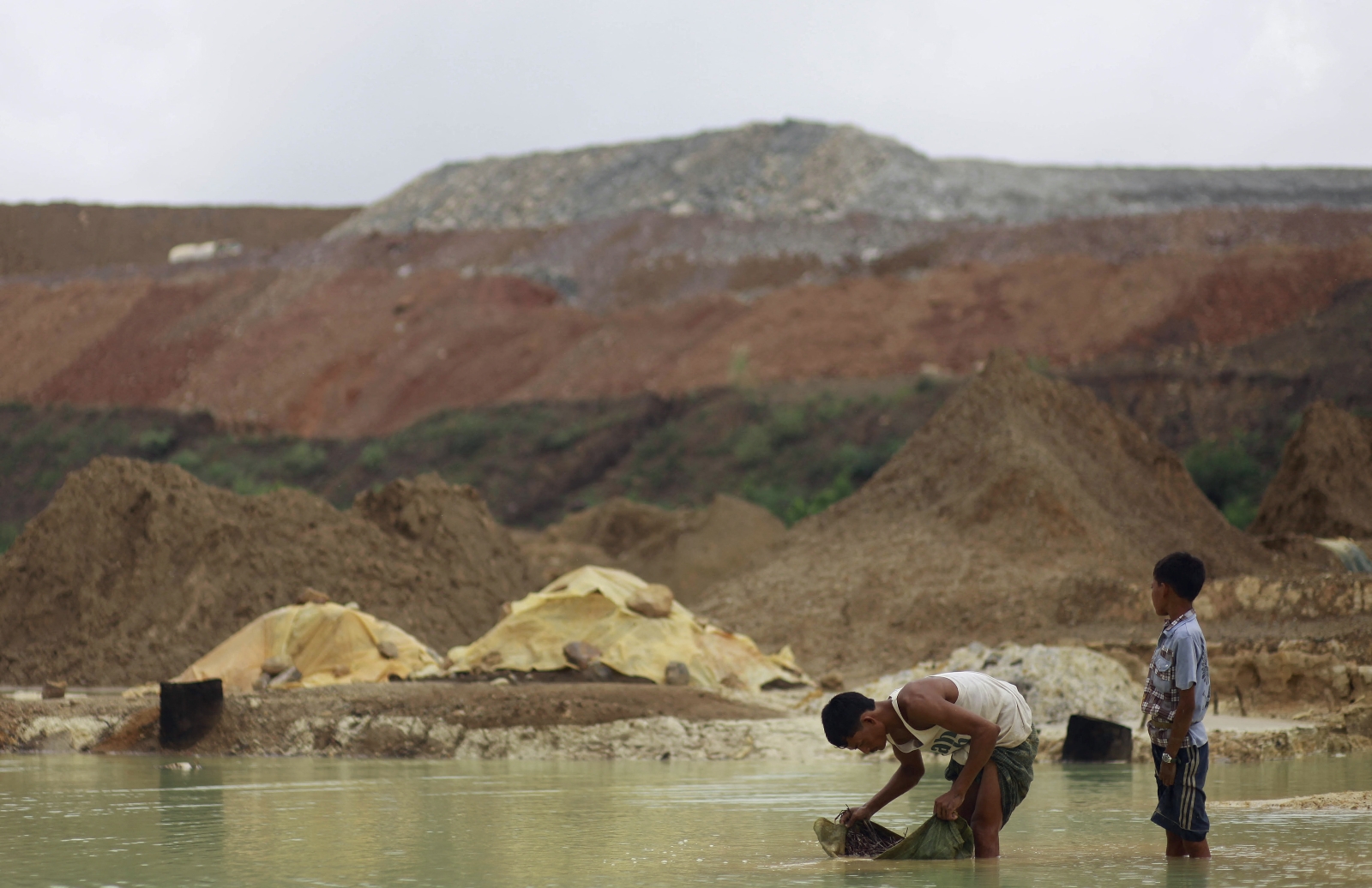OPINION
Pro-military movies that once captivated the Myanmar public are now objects of ridicule for their tired cliches, while a post-coup wave of resistance films is pushing the limits and winning global recognition.
By DO: NA | FRONTIER
In Our Turn, a short film released last year by director Na Gyi, a young man disputes his mother’s notion that the military’s torching of villages is karmic retribution for sins committed by Myanmar people in their past lives. “No, mother,” the man explains. “It’s not atonement. They are bullying us because they have guns.”
This earth-bound logic is common to many of the films made by directors who have hitched their art to the fight against the junta. Working from border areas or abroad, they seek to reflect the brutal realities of life in Myanmar since the 2021 coup, and to channel the shared rage and grief. They also aim to subvert the military’s doctrines and parody its delusions. But above all, they try to counter the fatalism that, in previous decades, has promoted acceptance of military rule, and to offer hope that it will one day be overcome.
George Orwell once said that “all art is propaganda”, but the pre-coup era saw many independent Myanmar filmmakers try to free their art from their country’s political struggles. The return of military rule and resulting civil war, however, has seen both sides of the fight use cinema as a weapon. But while pro-military cinema has wallowed in clichés, resistance films have experimented with content and style – sometimes to the bafflement of the audience – and have picked up overseas awards and media attention.
The extensive reach of these resistance films via the internet marks a rebalancing of the domestic playing field from a time when military propaganda enjoyed a largely captive audience. Some military-sponsored productions in earlier decades had mainstream appeal; and even now, some of them are considered classics of entertainment.
They include Never Shall We Be Enslaved from 1997, which is rebroadcast on the military-owned Myawady channel each year on January 4, Myanmar’s Independence Day. Fitting this occasion, the film retells the armed uprising against the British conquest of Myanmar and ousting of the last royal dynasty in the late 19th century. The story, adapted from a novel of the same name, fuses patriotism with war and the protection of Myanmar’s fragile sovereignty. This is also the basis of countless “soldier movies” that recount the current military’s exploits, and are re-televised annually on March 27, Armed Forces Day.
These productions dominated screens from the early 1960s to the first decade of the 21st century, when Myanmar was largely isolated from the rest of the world. The scarcity of entertainment during that time meant many Myanmar people eagerly awaited such films, which often cast the most glamorous actors and actresses of the day. As a result, many viewers were exposed to military propaganda without fully realising it.
This problem is dealt with in Dancing in the Dark, one of nine short films by different directors that comprise last year’s resistance film anthology Broken Dreams: Stories from the Myanmar Coup. The anthology won the NETPAC Award for the best Asian feature at the 2023 Kolkata International Film Festival in India.
Dancing in the Dark, directed by Bo Thet Htun, tells the story of a young Karenni woman who used to enjoy watching soldier movies that arrived in her remote homeland as DVDs from central Myanmar. Without realising they were being indoctrinated, the Karenni woman and others in her village would cheer on the victorious Bamar heroes, even as ethnic minorities like themselves were portrayed as dangerous insurgents.
“By the time we realised they were propaganda, we were already running from the murderous Bamar heroes,” she says. Among the military’s victims is her sister, whose corpse is found after she falls off a cliff while trying to escape sexual assault by soldiers.

Before Broken Dreams garnered international recognition, 2022’s Myanmar Diaries won accolades such as the Berlinale Documentary Award at the 72nd Berlin International Film Festival. This account of the coup and its aftermath splices together footage from the front lines of the protests alongside staged allegorical sketches that capture the trauma of the military takeover.
The global audience for such films means that proceeds from ticket sales or donations can be used to raise funds for internally displaced people and the resistance movement in Myanmar. This, combined with the films’ content, shows how cinema has become ammunition in the fight against the junta.
But while virtually uniform in their opposition to military rule, the films in the Broken Dreams anthology make space for a range of emotional responses to the coup, from bitter fury to hopeful escapism. In un_, directed by Rek, an unseen narrator says they committed an undisclosed sin so that, when they die, they can watch “the monster burn in hell” – an allusion to the coup leader, Senior General Min Aung Hlaing. This seemingly subverts the lyrics of a popular military song: “The brave never die. If [they] die, they never go to hell.”
At the other end of the spectrum is director Nay Chi Myat Noe Wint’s To a Dear Little Seedling. It shows a young woman, far away from her home, capering with joy in a sunlit field after she hears on the radio that an international court has sentenced Min Aung Hlaing for crimes against humanity. In reality, this is unlikely to happen without regime change in Myanmar, particularly because the country isn’t party to the Rome Statute that underpins the International Criminal Court. But in the escapist world of To a Dear Little Seedling, justice is done and the woman can return home, as so many exiles long to do.
Broken Dreams also features broad satire that mixes anger with derision. The Dictator’s Bathroom, directed by L Minpyae Mon, mocks Min Aung Hlaing’s delusion of kingship by depicting a tired-looking man, dressed in a white shirt with Myanmar royal accessories, sitting on a toilet as if it were his throne. He brandishes an ornamented dagger at a time traveller who has come from the year 2043 to “closely observe a dictator to see how hateful” he is. Back in 2043, the time traveller talks to a woman who turns out to be Min Aung Hlaing’s descendant. The woman is consumed with shame over the deeds of her forebear and burns what looks like a childhood photograph of her holding hands with him.
Tatmadaw turkeys
The military’s propaganda productions didn’t stop with the coup, but they have failed to adapt to the challenge posed by resistance cinema. Instead, they have stuck to fearmongering about threats to Myanmar’s sovereignty while painting a saintly picture of the military. This mostly results in self-caricature.
The year of the coup saw the release of 19-episode TV series The Heroes Fly with the Stars on Myawady TV. The story features highly civilised soldiers who are prepared to pay any price to protect Myanmar and its people. The film From the Far West to the Clouds, televised in 2022 to mark the 77th Armed Forces Day, contains the same familiar tropes of camaraderie and sacrifice.
By 2023, the junta’s propagandists seemed to have realised that the old approaches were no longer working. A Red Blanket, released for the 78th Armed Forces Day, was not only broadcast on television like previous soldier epics but also shown in cinemas. According to Khit Thit Media, military families were ordered to see A Red Blanket in cinemas and show their tickets to authorities afterwards as proof.
Besides this heavy-handed approach to distribution, the film pushes the boundaries on content. If the audience wasn’t already rooting for the soldiers battling insurgents in Kachin State, then they might be moved by the sight of a villainous Kachin Independence Army officer mutilating the ear of one captive hero. The victim, who is depicted earlier as a gracious and loving son, cries out for his mother before he’s eventually stabbed to death. Such scenes of torture were previously rare and show a determination to manipulate the audience through more extreme forms of storytelling.

But rather than winning people’s hearts, the film mostly attracted ridicule. Veteran pro-military actor Yan Aung’s crude Kachin accent became a running joke on social media. However, that didn’t stop the military regime from handing him the Best Actor award at the Myanmar Academy Awards in January this year, or from bestowing Best Director on Tin Aung Soe (aka Pan Myo Taw), who has many military propaganda films to his name.
Compared to Tin Aung Soe’s tired formulas, resistance films offer an invigorating blast of creativity. However, some viewers of Broken Dreams have complained on social media that several of the anthology’s films are hard to follow. They accuse the directors of pursuing art at the expense of clear, emotionally resonant depictions of conflict, resistance and life under dictatorship.
These critics would have preferred one of the anthology’s other films, Two Souls by director Myat Noe. Rather than arty abstraction, it clearly depicts the moral dilemmas and conflicting emotions shared by many people involved in the democratic struggle. Two male lovers are imprisoned and then reunited on the Thai-Myanmar border, where one of them has just been accepted for resettlement as a refugee in a Western country. The prospective refugee remains idealistic, insisting he’ll “still be with the revolution”, while the one left behind becomes cynical and bitter after sacrificing so much for “the mother-fucking country”.
But in the long haul of revolution, there is surely space both for realistic storytelling and more artistic attempts to capture life in Myanmar with its collective and individual traumas.
Our Turn, for instance, contains a dream sequence where a woman dances to the crackling sound of flames, flapping the tail of her traditional dancer’s dress while a village burns in the background. The woman is one of many mothers in Myanmar who have lost children to military airstrikes. She is numbed with pain and barely says a word throughout the film. Eventually she commits suicide by jumping from a bridge, leaving behind her son’s bloodstained notebook and school bag that she has kept with her.
Compare this to the lukewarm trickery of a scene in A Red Blanket in which KIA fighters fire artillery from a hilltop onto Tatmadaw soldiers passing in a valley below. The good-hearted soldiers are blasted to death in slow motion, but before the viewer has time to shed a tear, their lives are restored as the scene repeats in fast-motion reverse. It turns out that the attack was merely a hallucination in the mind of a KIA officer when he fell unconscious.
To stay relevant and powerful, resistance cinema needs to keep innovating and remain vigilant against the stultifying clichés and cheap manipulation of films like A Red Blanket. These repeated traits are dooming military propaganda films to irrelevance, granting an opportunity to resistance filmmakers to engage wider audiences. Several of these filmmakers have grasped the power they possess in the art of filmmaking. They have already scored international successes but must continue seeking new ways to tell their country’s story to a restless Myanmar public, and to an increasingly distracted world.
Do: Na is a Myanmar writer who likes to see her country through the lens of arts and culture.
This article was written under the ArtsEquator Fellowship. The views expressed are the writer’s own.







